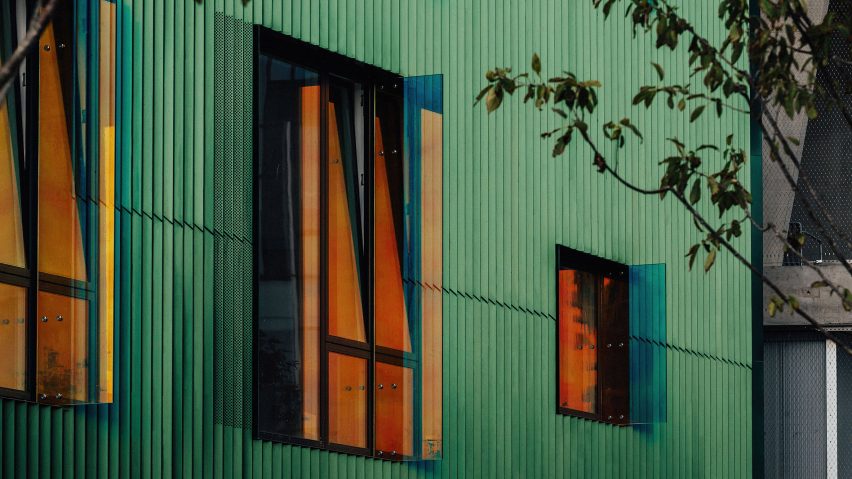
Mole Architects completes iridescent building in London's Design District
Iridescent aluminium sheets clad the rhomboid-shaped D2 building, a creative workplace by Cambridge studio Mole Architects that forms the latest addition to London's Design District.
D2 is Mole Architects' second completed building at the Design District development on Greenwich Peninsula, where eight firms including SelgasCano, 6a Architects and David Kohn Architects each designed two structures for a masterplan by HNNA.
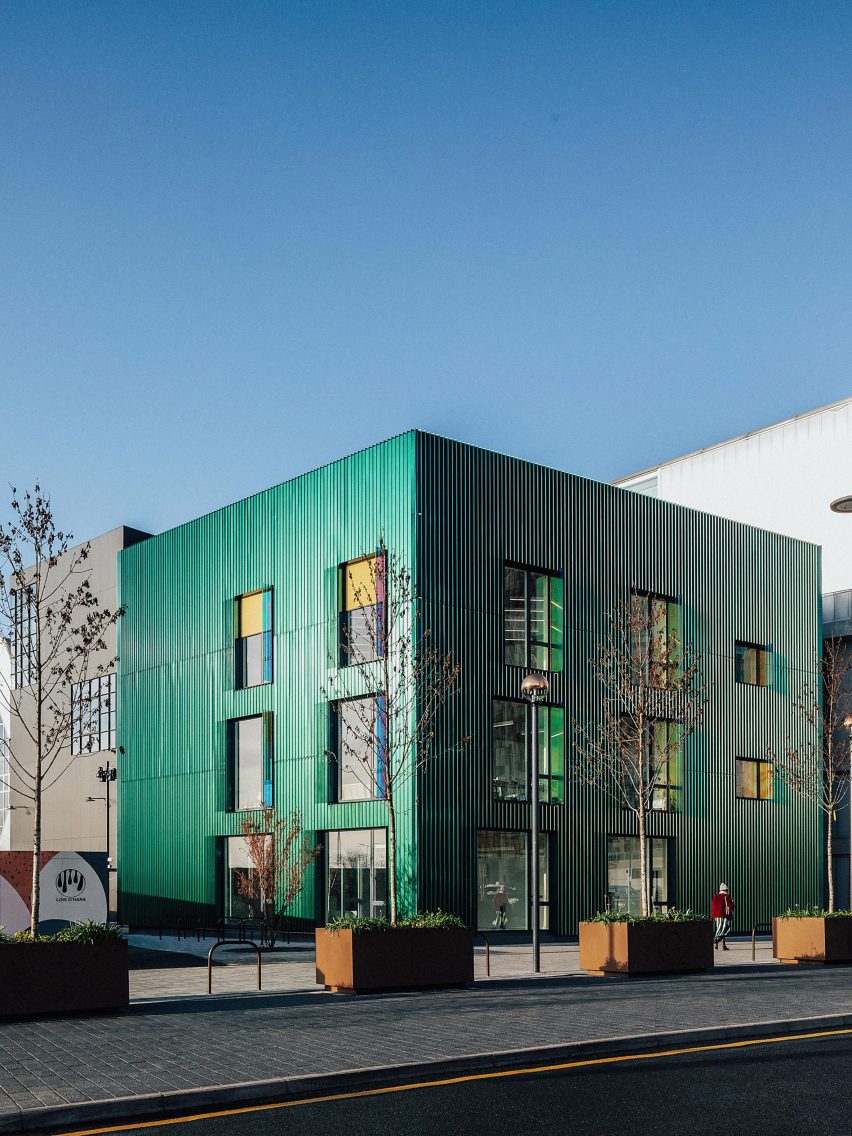
Headed by architect Meredith Bowles, Mole Architects previously completed a larger building called C2 that opens onto the district's central courtyard.
D2 is situated at the southeastern corner of the site. Its rhombus-shaped form includes two parallel elevations facing the outer street and an inner public square, along with angled facades that contribute to the masterplan's intentionally irregular geometry.
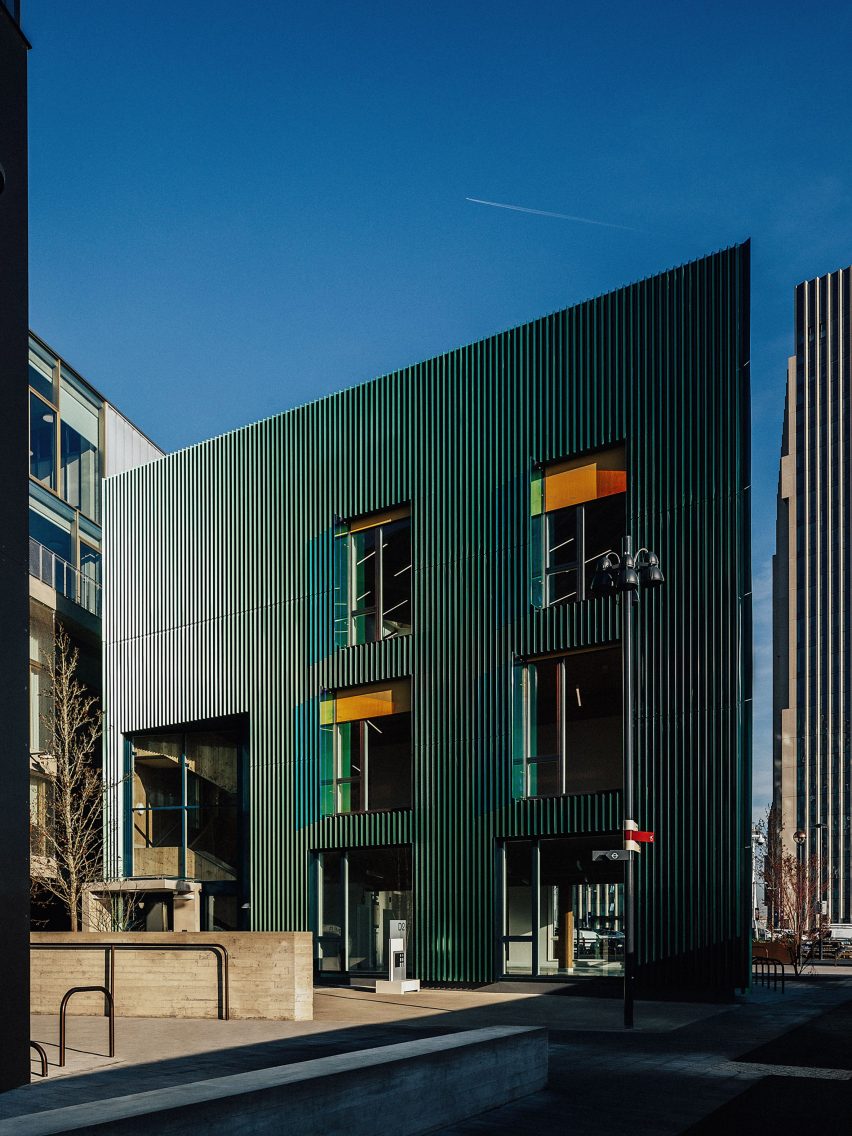
The building's facades are clad in a continuous rainscreen made from folded aluminium sheets with an iridescent finish, which shifts from green to deep blue depending on how light falls upon it.
Decorative external glass fins that incorporate a dichroic layer are positioned alongside the windows and also produce a colour-changing effect.
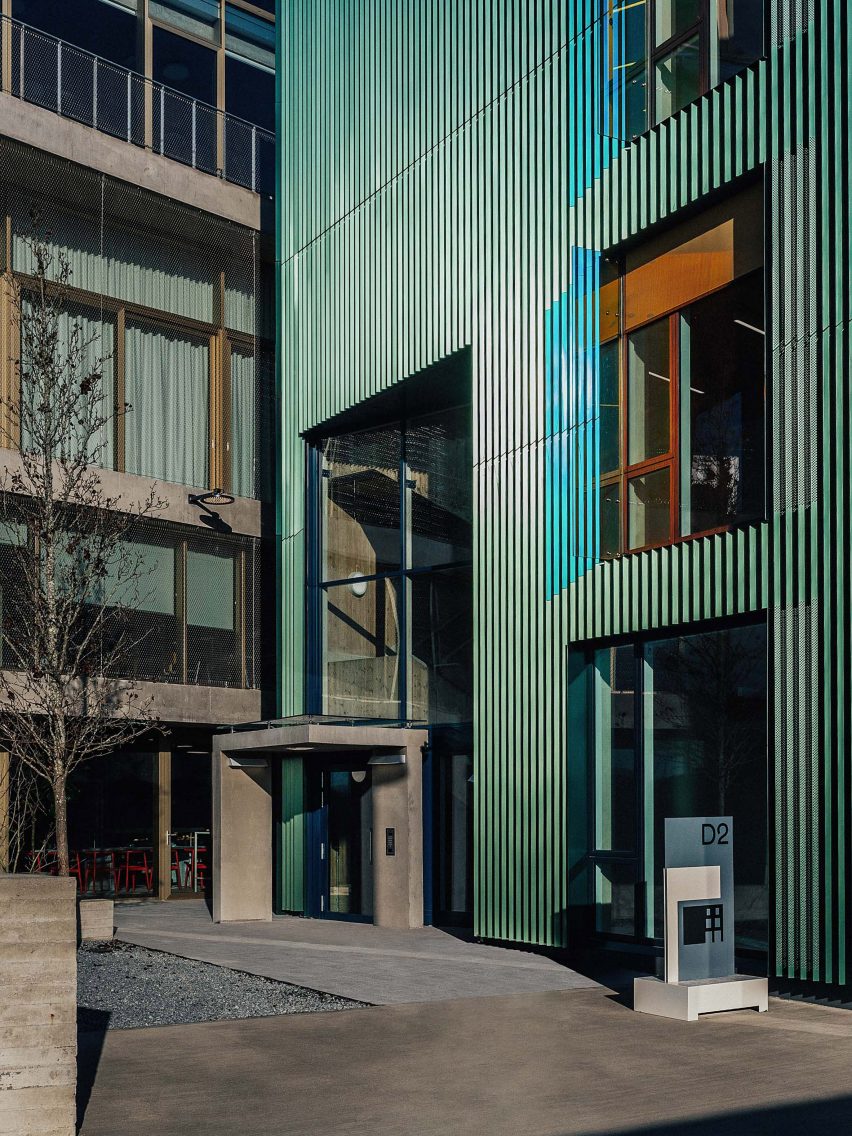
The shimmering colours of the profiled facade and the glass fins are intended to evoke the shifting shades of a gas flame – a reference to the site's history as one of Europe's largest gasworks.
At 580 square metres, D2 is the smallest of the 16 buildings in the Design District masterplan. It contains five dedicated workspaces for creative businesses distributed across its three levels.
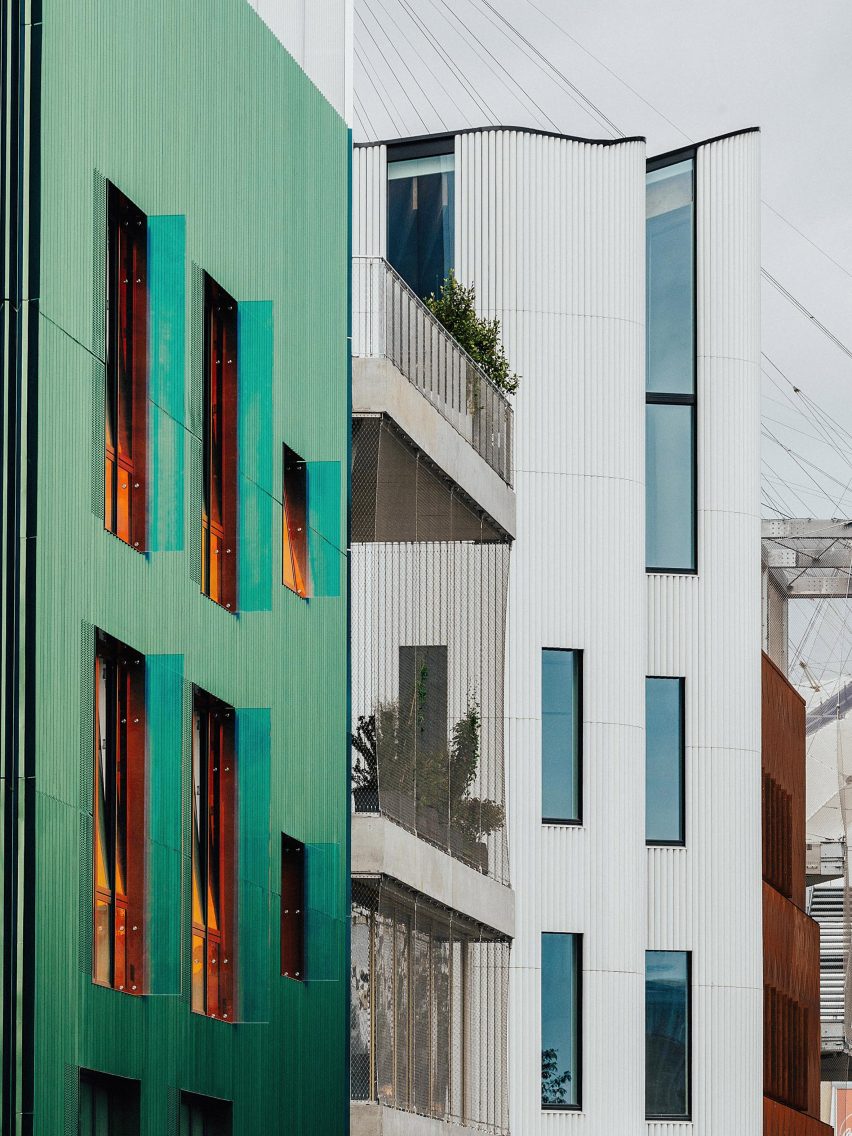
Its structure is built from cross-laminated timber – a construction method featuring wooden boards that are glued together at right angles to produce extremely rigid panels.
The CLT floor slabs are exposed internally and, together with the exposed timber walls and stairs, help to give the workspaces a warm character while eliminating the need for additional finishing materials.
"Making timber buildings is a gift to those that live or work in them," said studio founder Bowles.
"It seems that humans have a natural affinity with timber and the warmth it conveys. We've left quite a lot of timber exposed, as well as each space having fantastic large openings to the best views."

D2's interiors receive plenty of daylight thanks to the large windows and the shallow section.
A butterfly roof with triangular rooflights at the top corners also brings natural light to the upper floor.
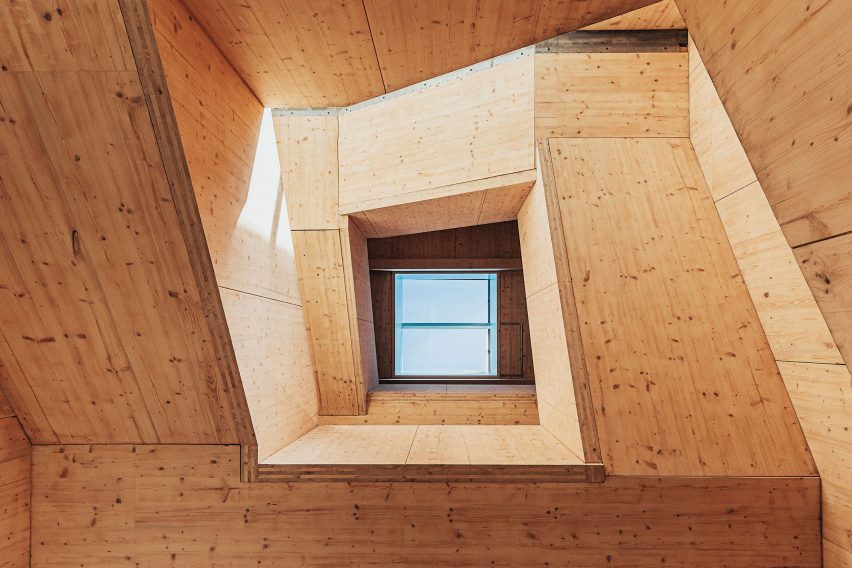
Other buildings completed as part of the masterplan include an aluminium-clad structure designed for Ravensbourne University London by Spanish studio Barozzi Veiga.
Roz Barr Architects contributed a co-working members' club called Bureau to the district, which features a bright-red salon and stairs that double as seating.
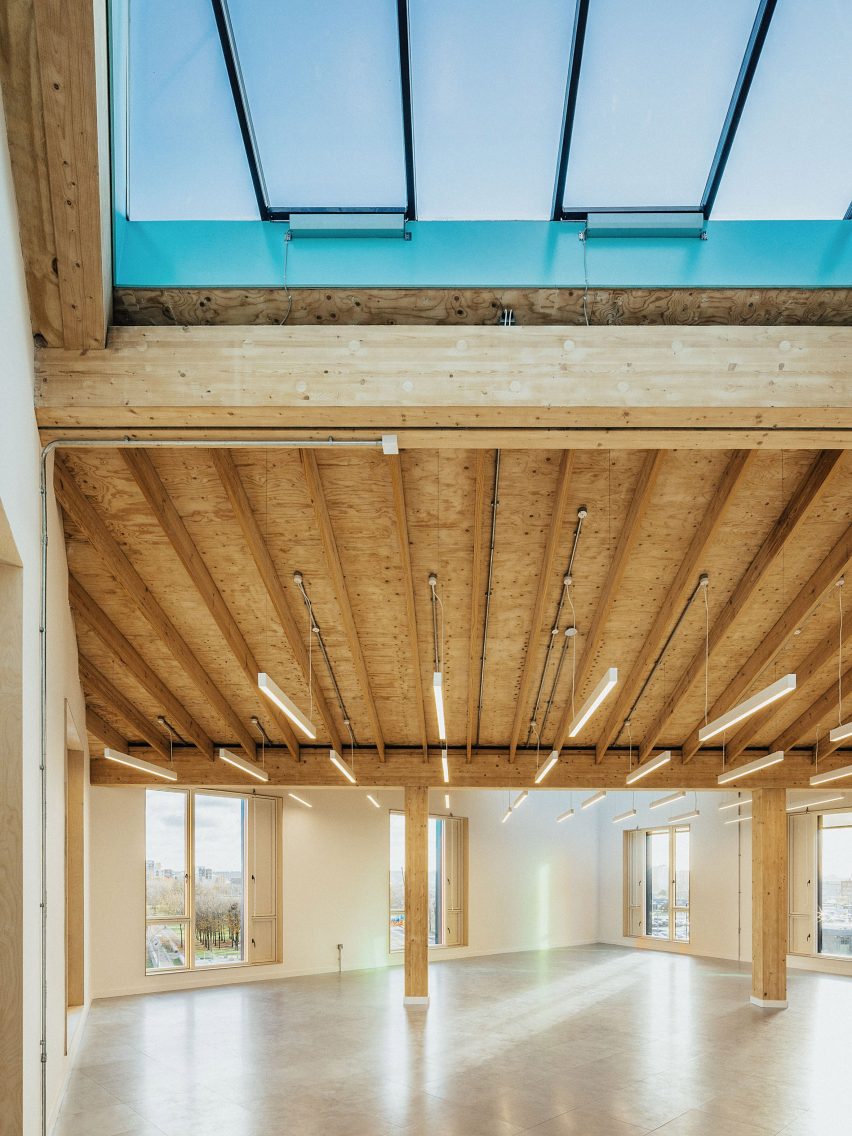
Bowles founded Mole Architects in Cambridge in 1997 and the studio has since gained a reputation for its distinctive buildings, including a house in the English seaside town of Poole with a roof that resembles the hull of an upturned boat.
Among the studio's other projects are a seaside property in Norfolk that is designed to resemble an ad hoc cluster of buildings and a brick-clad house in Ely that borrows details from the city's famous cathedral.
The photography is by Taran Wilkhu.